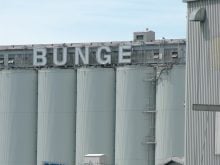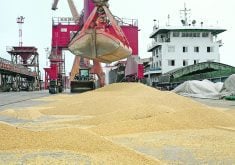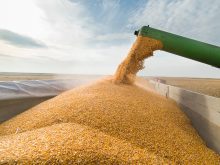Randy Froese used to grow 3,000 acres of edible beans on his farm near Winkler, Man., and it was usually a good moneymaker.
“The rule of thumb used to be a bad bean crop still made more money than a good cereal crop,” he said.
That adage changed when cereal prices began rising and soybeans started making inroads into the province. Edible beans became less attractive.
“We cut our acres pretty much in half just for the fact that they weren’t making money anymore,” said the chair of the Manitoba Pulse Growers Association’s edible bean committee.
Read Also

Defence investments could benefit agriculture
A bump in Canada’s NATO spending commitments could lead to infrastructure investments that would benefit rural areas
However, today’s bean prices have Froese and other growers considering another flirtation with the crop. He intends to seed 2,000 acres of navy, pinto and black beans on his farm this year.
Companies are offering 40 cents per pound navy bean contracts, and farmers are still holding out.
“The last five or 10 years, if anybody could have got a 40 cent contract, they would have been jumping all over it,” said Froese.
However, growers know the pipeline is dry. They planted 60,000 acres of the crop in Manitoba last year, which is about half of the previous five-year average.
Harvested area in the United States was down 38 percent compared to the previous year, as was production.
As well, the Mexican bean crop is in trouble. The U.S. Department of Agriculture estimates 600,000 tonnes of Mexican production, down from its earlier forecast of 880,000 tonnes because of the most severe drought in northern Mexico in 80 years.
“I can’t see the price of beans going down. I just see it going up,” said Froese.
He forecasts a rebound in Manitoba beans to as high as 115,000 acres.
“I can definitely see a lot more guys putting edibles back in if the price stays or goes up,” said Froese.
Prices for the main types of beans grown in Manitoba are all up and have been holding steady. However, farmers are reluctant to commit because of the supply challenges.
“It seems like a lot of guys are holding out yet,” he said. “A lot of producers are seeing the potential in a lot higher value for beans.”














